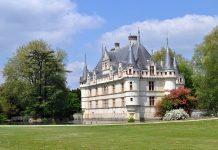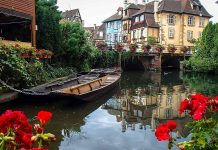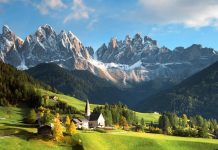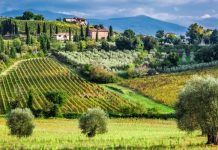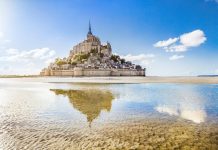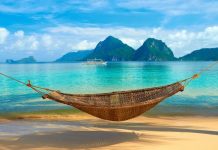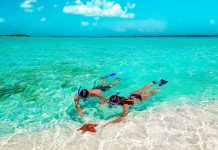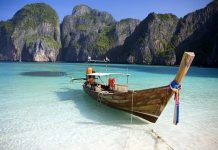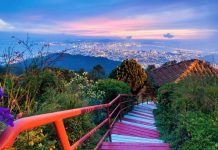
Rwanda’s Volcanoes NP: Tracking Mountain Gorillas in the Mist
Nestled in the northwestern corner of Rwanda, Volcanoes National Park (Parc National des Volcans) is a land of mist-covered peaks, lush bamboo forests, and one of the world’s most extraordinary wildlife encounters: the endangered mountain gorilla. This park, part of the larger Virunga Massif that spans Rwanda, Uganda, and the Democratic Republic of Congo, offers an unparalleled opportunity to trek through dense jungles and come face-to-face with these majestic primates in their natural habitat.
The Realm of the Mountain Gorillas
Volcanoes National Park is home to approximately one-third of the world’s remaining mountain gorilla population, with around 350 individuals residing in its verdant slopes. These gentle giants, scientifically known as Gorilla beringei beringei, share 98% of their DNA with humans, making each encounter a profoundly moving experience.
The park’s gorillas live in family groups led by a dominant silverback, with each troop exhibiting unique social dynamics. Some of the most famous families—such as the Susa, Amahoro, and Kwitonda groups—have been habituated to human presence, allowing visitors to observe them up close while minimizing disturbance.
The Gorilla Trekking Experience
Pre-Trek Briefing
Before setting out, trekkers gather at the park headquarters in Kinigi for a mandatory briefing. Park rangers provide essential guidelines, emphasizing the importance of maintaining a 7-meter distance, avoiding direct eye contact, and refraining from flash photography. Groups are limited to eight visitors per gorilla family to ensure minimal impact on the animals.
The Trek Begins
The journey into the forest varies in difficulty, ranging from 30 minutes to several hours of hiking, depending on the gorillas’ location. The terrain can be steep and muddy, with thick vegetation and high-altitude conditions adding to the challenge. However, the reward—an intimate hour spent with a gorilla family—makes every step worthwhile.
As you ascend through bamboo groves and misty clearings, the sounds of the forest come alive: birds chirping, branches rustling, and the occasional grunt of a gorilla nearby. The trackers, often former poachers turned conservationists, use their deep knowledge of the gorillas’ movements to lead the way.
Face-to-Face with Giants
When the group finally locates the gorillas, time seems to stand still. Watching a silverback groom his offspring, a mother nursing her baby, or juveniles playfully tumbling through the undergrowth is a humbling experience. The gorillas’ expressive eyes and human-like gestures create a deep sense of connection, reinforcing the importance of their conservation.
Beyond Gorillas: Other Park Highlights
While gorilla trekking is the park’s main attraction, Volcanoes National Park offers other incredible experiences:
Golden Monkey Tracking
These playful, brightly colored primates are another endangered species found in the park’s bamboo zones. Unlike gorilla treks, golden monkey encounters are often more active, with the monkeys leaping between branches and foraging on bamboo shoots.
Hiking the Virunga Volcanoes
Adventurous travelers can summit one of the park’s five volcanoes, including Mount Bisoke (3,711m), known for its stunning crater lake, or the more challenging Mount Karisimbi (4,507m), which requires a two-day trek.
Dian Fossey’s Legacy
A visit to the Karisoke Research Center, founded by famed primatologist Dian Fossey, offers insight into her groundbreaking work with gorillas. Her grave, alongside her beloved gorillas like Digit, lies near the research station, a poignant reminder of her dedication to conservation.
Conservation Success & Sustainable Tourism
Rwanda’s commitment to gorilla conservation is evident in its strict anti-poaching measures and community-based tourism initiatives. A portion of trekking permit fees ($1,500 per person) funds conservation projects and supports local communities, ensuring that tourism benefits both wildlife and people.
Thanks to these efforts, Rwanda’s mountain gorilla population has steadily increased, a rare conservation success story in a world where many species face decline.
Practical Information for Visitors
- Best Time to Visit: June-September (dry season) and December-February for clearer trails.
- Permits: Must be booked in advance through the Rwanda Development Board or authorized tour operators.
- What to Bring: Sturdy hiking boots, rain gear, gloves, and a camera (without flash).
- Health & Safety: Altitude sickness can be a concern; acclimatize in Musanze (Ruhengeri) before trekking.
Final Thoughts
Trekking through the misty forests of Volcanoes National Park to meet Rwanda’s mountain gorillas is more than just a wildlife encounter—it’s a transformative journey. The profound connection forged in those quiet moments among the gorillas leaves visitors with a lasting appreciation for these incredible creatures and the urgent need to protect them. For those seeking adventure, conservation insight, and a truly unforgettable experience, Rwanda’s Volcanoes NP is a destination like no other.


